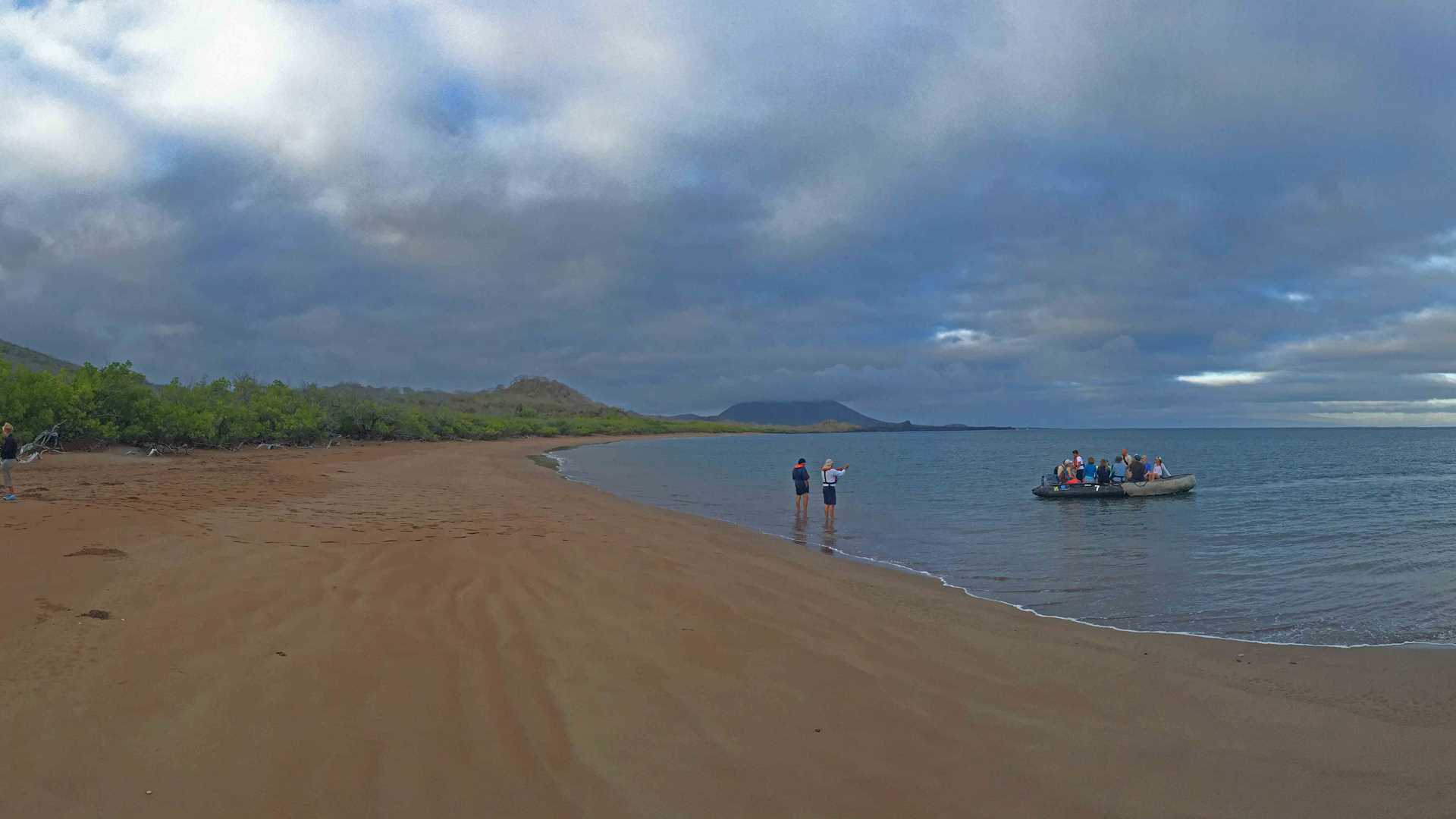Santiago is one of the oldest islands in Galapagos, in terms of human history. It is also known as James or San Salvador. Lindblad Expeditions supports conservation throughout the islands in many ways, and this was our shining example for nearly two decades; the results ended in 2007 with the 100% eradication of large feral mammals that affected local flora and fauna on Santiago Island.
Our day began with an early outing at Espumilla Beach. We went for a hike inland through a dense mangrove forest up to a great view point; Darwin visited Santiago Island in 1835 and noted this area was saved from the volcano activity that would have changed this island and its landscape. Espumilla Beach is an awesome place for a photo walk, today a young Galapagos hawk was chasing a ghost crab, our photo instructor on board, Walter Perez, showed our guests how to obtain great shots.
After we returned to the ship, the National Geographic Endeavour was repositioned to Buccaneers Cove, where water activities were offered. There were rounds of glass-bottom boat outings for the non-snorkelers, kayaking opportunities, Zodiac cruises and snorkeling off of the Zodiac. We all enjoyed observing Galapagos sea lions, Galapagos fur seals, colorful fish, lots of sardines and anchovies, parrotfish, wrasses and many creoles. It was an incredible morning!
The ship was repositioned in the afternoon towards Egas Port. The first outing of the afternoon was a visit to a black sandy beach, where our young explorers enjoyed the sunny afternoon, the calm waters and another great snorkeling outing; during this time of the year, due to the cold waters, there is a great number of fish and big production of ulva algae—it was great to see white-tipped reef sharks, playful Galapagos sea lions and two Galapagos sharks.
The second outing was a hike that led us through the intertidal zone, a great opportunity to explore the area and observe shore birds such as whimbrels, plovers, ruddy turnstones, and American oystercatchers. Many land birds were also spotted, including Darwin finches, Galapagos flycatchers and yellow warblers. However, today our highlight was the sighting of a Galapagos fur seal, resting near collapsed lava tubes known as the Grottos. The sun began to set and we returned to the beach where we saw many pelicans resting at the rocks and brown Noddy terns looking for the last meal of the day.
The Galapagos always surprises us in such ways, where many emotions can barely be expressed—we marvel at the tameness of the creatures, the calmness of the place, and the excellent weather conditions. And the adventure continues tomorrow.






